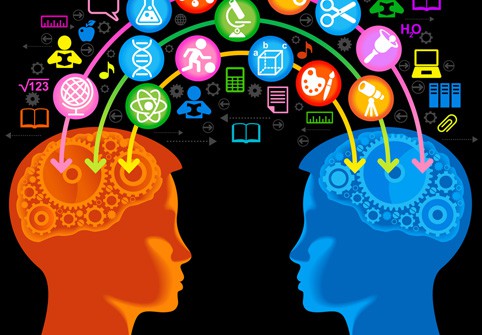The Sky’s the Limit: 16 Must-Read Quotes from Michael Fullan’s Stratosphere

Michael Fullan is certainly one of the three to four most influential edu-writers of our time. On whole systems design and change, only Paul Hill has earned equal influence. His most recent contribution, Stratosphere: Integrating Technology, Pedagogy, and Change Knowledge , is very short and very optimistic. Like me, Fullan is convinced that we can and must build “irresistibly engaging” learning experiences for both students and teachers. I love his notion of ‘skinny solutions’–they’re hard to build and easy to implement. He puts the onus on education leaders to make change easier by adding “enjoyable, worthwhile experiences.”
In his academic retirement Fullan has adopted “a lighter style of writing.” His insistence that “We should be able to double our learning at half the cost,” is not a financial analysis but a directional statement about what will soon be possible. In terms of details, Stratosphere lives up to its name. It’s a high level treatise that is directional summary of what is becoming possible–personalized and engaging learning for students and more productive working conditions for teachers.
For years, Fullan has been involved in whole systems reform in Canada, but recently he has formed a team to develop engaging content and a next generation platform (more on that in six weeks). While most of American education is trapped in old reform debates that are rapidly becoming obsolete, Fullan’s optimistic vision of next gen learning and change management is refreshing.
Following is the Cliff Notes version of Stratosphere in 16 quotes (emphasis added):
On the problem. “People don’t realize how bad the situation is in the U.S. public education system…Much of the problem is hidden, and it is much worse and worsening more than even most critics realize…The goal over the next decade–and we can accomplish it–should be to double our learning at half the cost.”
“The average performance of systems is not the most important factor; rather, the gapbetween low and high performers is….The problem of inequality is becoming more pronounced and more entrenched decade by decade…a social time bomb.”
“Ninety-five percent of students love school in Kindergarten, but by Grade 9, the feeling has steadily declined to 37 percent…a hell of a lot of disengaged students.”
Solution. “The solution lies in the concentration of the three forces of pedagogy, technology, and change knowledge. If you want to head off destruction, we need to make it all about learning, let technology permeate, and engage the whole system.”
“This book is about how the ideas embedded in the new technology, the new pedagogy, and the new change knowledge are converging to transform education for all…Technology has had its own pace, wildly outstripped the other two in sheer quantity and in aimless quality. It is now time to reconcile how technology can join the fray in a more purposeful way in order to transform learning for educators and learners in the 21st century.”
Learning “We should do less of spending money on assessment detached from designing learning and more of creating learning experiences that are irresistibly engaging.”
“The magic of Stratosphere is that students and teachers are conjointly stimulated to engage in the pursuit of deeper learning; it is fueled by their passions and purposes. Both students and their teachers are turned on.”
On tech integration. “The integration of technology and pedagogy to maximize learning must meet four criteria. It must be irresistibly engaging; elegantly efficient (challenging but easy to use); technologically ubiquitous; and steeped in real-life problem solving.” “Learning, surely the most important human resource in the world, is not benefiting from the greatest technical resource on the planet. It is time that gadget goes to school and schools go to gadget 24/7.”
“Never think of technology without worrying about teachers and mentors. It is teachers withtechnology who will make the difference.” “We have…greatly miscast and underutilized technology’s power. When we enlist technology in the service of exploratory learning for all, watch out!”
On the next big innovations “The underlying assumption [in this book] is that costs will be reduced while quality and impact increase….We should enter this new era with a mindset that large savings are to be had as quality multiplies…Three examples: voice recognition…intergenerativity (how to bring older people and younger people together)…personalization.”
On change “Change really isn’t as hard as we thought if we capture people’s interest and give themenjoyable, worthwhile experiences.” “We are learning more about large-scale change, making it less complicated by focusing on a small number of ambitious goals with a coherent strategy that attends in concert to half a dozen or so key factors: intrinsic motivation, capacity building, transparency of results and practice, leadership at all levels, and a positive but assertive stance on progress…I call this “simplexity”–a small number of key factors that must be made to gel with large groups of people.”
“I hold out four criteria for integrating technology and pedagogy to produce exciting,innovative learning experiences for all students –something desperately needed to bring education into the 21st century. These new developments must be i) irresistibly engaging (for students and for teachers); ii) elegantly efficient and easy to use; iii) technologically ubiquitous 24/7; and iv) steeped in real-life problem solving.”
On why you should be optimistic:
- “The old technology of tell and test or experience and evoke does not work, and it is becoming clearer to more people that it can never work.”
- “Examples of the new pedagogy of partnering with students are rapidly under development. These examples will only advance in quality and availability all the more so because technology can be the great accelerator. Indeed, this is what the stratosphere phenomenon predicts.”
- “There will be a great appetite for the new way. Passion, purpose, and the new pedagogy are natural winners because they tap into and activate what is human–doing something intrinsically meaningful and of value to oneself, one’s peers, and the world at large. You don’t get any closer to secular spiritualism that this.”
- “It really is easier that we might think for the simple reasons that people will be doing what they like, and many people will be helping. Many hands and minds do make light work.”








0 Comments
Leave a Comment
Your email address will not be published. All fields are required.